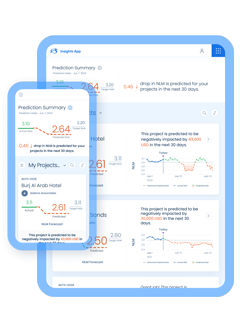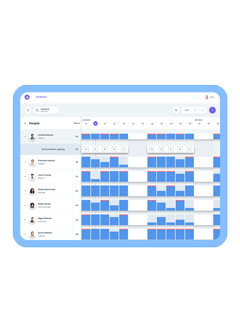
Accurate financial accounting is imperative for the long-term success of any company, and the nature of the architecture, engineering and environmental consultancy (AEC) industry makes it a particularly complicated undertaking. Therefore, AEC firms usually designate specific roles in their organizations to address the added complexities associated with internal and external financial reporting.
Since AEC is a project-based industry, most earnings and expenses are associated with projects. Firms will often have multiple ongoing projects, sometimes thousands at a time. To manage this, they implement specific processes and schedules that keep project and general accounting separate. This separation is crucial for maintaining financial transparency, accountability and control and ensuring effective project management, accurate financial reporting and overall organizational success.
Project and corporate accounting have different goals. Simply put, corporate accounting deals with the firm’s overall financial information and considers all the projects across the entire organization. Project accounting, on the other hand, evaluates specific projects and the tasks affecting revenue generation. Having a project accounting team ensures that these two vital functions can communicate effectively even though they speak different languages.
A project accountant deals with information, systems and processes related to specific projects and general accounting. They understand both sides of the business and can bridge the gap by providing a financial overview and project details when needed. To shed some light on the project accountant role, we’ve listed and defined some of the common terms they use to analyze a project’s financial impact.
Days Sales Outstanding (DSO)
- A calculation that estimates the average collection period — defined as the average number of days that accounts receivable remain outstanding
DSO =
XNumber of DaysAccounts Receivable Earned Value ORDSO =Accounts Receivable Earned Value Number of Days
General & Administrative (G&A) Expenses
- Expenditures associated with day-to-day business operations
Gross Profit
- Profit remaining after subtracting direct costs from revenue
Maximum Cost Rate (MCR)
- The maximum wage a client will accept as a billable value when invoicing based on an hourly wage — typically used when project effort is calculated based on a multiplier and to ensure that the most expensive resources are not performing tasks that do not warrant their skills
Net Labor Multiplier (NLM)
- The proportion of project profit generated from a project’s direct labor investment
NLM =Revenue – Direct Expense CostsDirect Labor Costs
Net Profit
- The amount of money remaining after subtracting direct costs and overhead costs from revenue
Overhead Multiplier
- A factor used in calculating project payroll cost to account for overhead charges incurred — overhead costs (rent, taxes, insurance, etc.) are not project related but considered part of the actual cost of doing business, so the cost of overhead is allocated to the project cost to report a more accurate picture of the money spent to complete project work
Profit Percentage
- The proportion of money retained as profit from every dollar earned — calculated as profit divided by revenue then multiplied by 100
Provisional Revenue
- The amount of revenue earned that can be adjusted due to certain taxation rules
Revenue Factor
- Units of revenue per unit of work — calculated as utilization percent multiplied by the net labor multiplier
Surcharge
- A supplemental charge to cover office-related expenses (faxes, office supplies, telephone use, etc.), typically involving a contractual agreement to calculate a percentage of labor charge that is then used to cover such expenses
AEC project accounting certainly stands out as unique among financial reporting practices. Without it, AEC firms cannot rely on the accuracy of their general financial accounting practices. That’s why project accounting is so crucial — firms need resources who understand the project details and their financial impacts.
We hope this collection of project accounting definitions helps you better understand accounting from a project standpoint. Check out our blog for more project accounting–related resources, like an explanation of the top concepts an AEC project accountant should understand or a deep dive into the difference between DSO and DPO.









